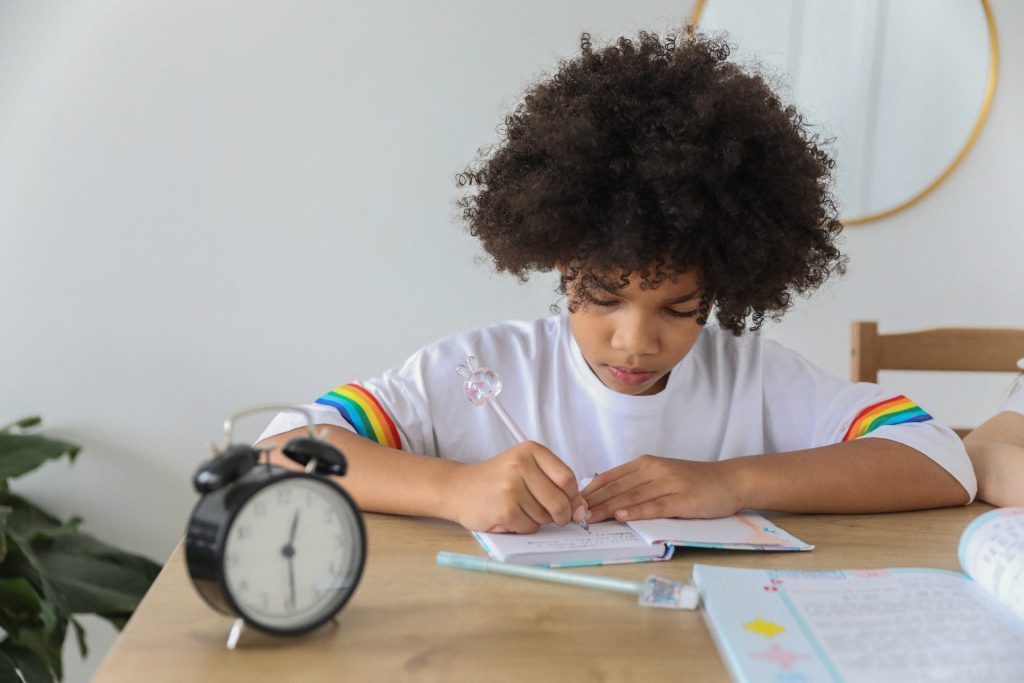Discover effective strategies and techniques for teaching writing to 7-8 year old children.
How to Teach Writing to 7-8 Year Old Children
Are you ready to embark on an exciting journey of teaching writing to 7-8 year old children? Well, put on your thinking caps and grab your colorful markers because we are about to dive deep into the world of literacy and imagination. In this article, we will explore various strategies, milestones, and techniques to make the writing learning process an enjoyable experience for both you and your budding writers.
Understanding the Writing Capabilities of 7-8 Year Olds

Before we begin our writing adventure, let’s take a moment to familiarize ourselves with the magical world of 7-8 year olds and their writing capabilities. At this age, children have made significant progress in their cognitive development, and their writing skills are blossoming like spring flowers.
Writing becomes an avenue for children to express their thoughts, ideas, and emotions. It allows them to develop their creativity, enhance their communication skills, and build a strong foundation for future academic success.
But what exactly happens in the minds of these young writers? Let’s explore the fascinating world of cognitive development and its impact on their writing skills.
Cognitive Development and Writing Skills
As the cognitive gears are turning in their little minds, 7-8 year olds start grasping more complex concepts of language, grammar, and structure. They exhibit a growing understanding of the purpose and function of writing, whether it be penning stories, sharing experiences, or composing poems to touch the hearts of readers.
During this stage, children’s brains are like sponges, absorbing information and making connections at a rapid pace. Encourage their intellectual growth by providing opportunities for critical thinking, problem-solving, and imaginative exploration.
By engaging in activities that stimulate their cognitive abilities, such as puzzles, word games, and reading comprehension exercises, you can help them develop the necessary skills to become proficient writers.
Common Writing Milestones for this Age Group
Each child is a unique star in the sky of learning, but there are some common milestones to look out for in this age group. By celebrating their achievements, you can motivate and inspire them to reach even higher.
At the 7-8 year old stage, children typically develop the ability to form coherent sentences, spell basic words accurately, and use appropriate punctuation marks. They also exhibit an understanding of how paragraphs organize their thoughts and ideas.
It’s truly remarkable to witness their growth as they transition from simple sentences to more complex structures. They begin to experiment with descriptive language, adding vivid details to their writing to engage and captivate their readers.
Furthermore, their expanding vocabulary allows them to express themselves with greater precision and nuance. They become adept at using adjectives, adverbs, and figurative language to paint a vivid picture in the minds of their audience.
As their writing skills develop, children also start to understand the importance of revising and editing their work. They learn to self-correct, seeking clarity and coherence in their compositions.
By providing constructive feedback and guiding them through the revision process, you can help them refine their writing skills and cultivate a sense of pride in their work.
So, let’s embark on this writing journey with our 7-8 year olds, nurturing their creativity, fostering their love for language, and celebrating every milestone along the way.
Preparing to Teach Writing
Now that we have a deeper insight into the capabilities of our young writers, it’s time to roll up our sleeves and prepare for the teaching adventure ahead.
Teaching writing is not just about imparting knowledge and skills; it’s about creating an environment that nurtures creativity and encourages self-expression. As educators, we have the power to shape the writing journey of our students, and it all begins with setting the stage for an enthusiastic writing adventure.
Creating a Conducive Learning Environment
Set the stage for an enthusiastic writing journey by creating a warm and inviting learning environment. Make sure the writing area is well-lit, comfortable, and stocked with essentials such as colorful paper, pencils with delightful erasers, and inspiring wall displays showcasing creative writing examples.
But it doesn’t stop there. To truly foster a love for writing, encourage collaboration and teamwork by incorporating comfortable seating arrangements and interactive writing activities. Create spaces where students can gather in small groups to discuss ideas, share their work, and provide feedback to one another. By fostering a sense of community within the writing space, students will feel supported and motivated to explore their writing potential.
Furthermore, consider incorporating elements of nature into the learning environment. Research has shown that exposure to natural elements, such as plants and natural light, can enhance creativity and cognitive function. So, bring in some potted plants, open the curtains to let in the sunlight, and create a space that connects students to the beauty of the natural world.
Gathering Necessary Materials
Don’t forget to stock up on the necessary materials to support the young writers’ needs. From various writing utensils like pencils, markers, and gel pens to an ample supply of paper, notebooks, and even a trusty thesaurus, make sure you have everything within their reach.
But beyond the basics, consider adding a collection of age-appropriate books and writing prompts to fuel their imagination and provide inspiration for their writing adventures. A well-stocked classroom library can serve as a gateway to new ideas, different writing styles, and diverse perspectives. Encourage students to explore these resources and let their reading experiences shape their writing voice.
Additionally, technology can play a significant role in supporting young writers. Consider providing access to computers or tablets with writing software and online resources. These tools can help students refine their writing skills, conduct research, and explore digital storytelling possibilities.
Remember, the materials you provide should not only be functional but also spark curiosity and excitement. Consider incorporating colorful and visually appealing materials that ignite the imagination of your young writers. By creating an environment filled with possibilities, you are setting the stage for their writing journey.
Effective Writing Teaching Strategies
Now that our teaching nest is ready, let’s explore some effective strategies to guide our young writers on this exciting journey.
Writing is a skill that can be both challenging and rewarding for young learners. As educators, it is our responsibility to create an environment that fosters their love for writing and helps them develop their skills. In this article, we will delve into some innovative teaching strategies that will make the writing process enjoyable and engaging for our students.

Incorporating Fun into Writing Lessons
Who said learning can’t be fun? Infuse your writing lessons with a playful vibe to keep the creative juices flowing. One way to do this is by using interactive games that encourage students to think critically and express their ideas through writing. For example, you can organize a writing scavenger hunt where students have to find and write about specific objects in the classroom or schoolyard.
Storytelling sessions are another fantastic way to make writing lessons enjoyable. Invite students to share their own stories or read aloud from their favorite books. This not only sparks their imagination but also exposes them to different writing styles and genres.
Engaging writing prompts are like magical keys that unlock the door to creativity. Choose prompts that are relevant and interesting to your students’ lives. For example, you can ask them to write about their dream vacation or imagine a world where animals could talk. The possibilities are endless!
Remember, the more fun they have, the more they’ll be inclined to eagerly embrace the wonderful world of writing!
Using Visual Aids to Enhance Learning
A picture is worth a thousand words, and visual aids can work wonders when teaching writing to young children. Utilize colorful charts, diagrams, and illustrations to help them visualize concepts such as story structure, character development, and even grammar rules.
For instance, you can create a story mountain chart that shows the different elements of a narrative, such as the exposition, rising action, climax, falling action, and resolution. This visual representation will help students understand the importance of a well-structured story.
Another effective visual aid is the character development chart. Ask students to draw and describe their characters, including their appearance, personality traits, and motivations. This exercise not only enhances their writing skills but also encourages them to think deeply about their characters’ backgrounds and motivations.
Whether it’s drawing illustrations for their stories or creating visual vocabulary cards, these visual aids will enhance their comprehension and ultimately boost their writing skills.
By incorporating fun and using visual aids, we can create a vibrant and engaging learning environment that nurtures our students’ writing abilities. So, let’s embark on this exciting journey together and inspire the next generation of writers!
Teaching the Basics of Writing
We have set the stage, harnessed their enthusiasm, and now it’s time to teach them the building blocks of writing.
Introducing Letters and Words
Begin by exploring the wonders of letters and words. Teach them the alphabet in a playful manner, incorporating songs, games, and crafts. Help them understand the sounds each letter makes and how they combine to form words. Gradually introduce sight words and encourage them to practice their reading and writing skills through engaging activities.
Guiding Children in Sentence Construction
Once they have a grasp of letters and words, guide them towards constructing sentences. Start with simple sentences and gradually progress towards more complex structures. Encourage them to express their thoughts clearly and creatively. Provide examples and interactive exercises to help them develop their sentence-building skills.
Encouraging Creative Writing
Now that our young writers have conquered the basics, let’s nurture their creativity and encourage them to explore the realms of their imagination through creative writing.
Writing is a powerful tool that allows children to express their thoughts, emotions, and ideas. It is a gateway to their imagination, where they can create worlds, characters, and stories that are entirely their own. By encouraging creative writing, we are not only fostering their love for language and literature but also helping them develop essential skills such as critical thinking, communication, and self-expression.
Inspiring Storytelling Skills
Stories have the power to transport us to magical worlds and ignite our imagination. Encourage your young writers to create their own stories by providing inspiration, such as interesting prompts or thought-provoking questions. Allow them to freely express their ideas and guide them in developing strong characters, captivating plots, and satisfying endings.
One way to inspire storytelling skills is by introducing them to different genres and styles of writing. From fantasy to mystery, adventure to romance, each genre offers a unique set of elements that can captivate young minds. Encourage them to experiment with different genres and explore their preferences, helping them find their own voice as writers.
Promoting Poetry and Rhymes
Poetry is the music of words, and rhymes add a delightful melody to their writing. Encourage the budding poets by introducing various poetic forms and conducting interactive poetry sessions. Let them explore the beauty of rhythm, rhyme, and imagery while expressing their thoughts and feelings in a poetic manner.
Poetry not only enhances their language skills but also encourages them to think creatively and play with words. It allows them to express complex emotions in a concise and powerful way, teaching them the importance of choosing the right words and crafting their writing with precision.
Moreover, poetry can be a wonderful tool for self-reflection and personal growth. Encourage your young writers to explore their inner thoughts and feelings through poetry, providing a safe space for them to express themselves and discover their unique perspectives on the world.
And there you have it – a playful guide to teaching writing to 7-8 year old children. Remember, every child is unique, and nurturing their writing skills requires patience, encouragement, and a whole lot of fun. So, grab your writing wands and embark on this magical journey, inspiring and shaping the writers of tomorrow!



